Endocrine vasculatures are preferable targets of an antitumor ineffective low dose of anti-VEGF therapy
- PMID: 27035988
- PMCID: PMC4839458
- DOI: 10.1073/pnas.1601649113
Endocrine vasculatures are preferable targets of an antitumor ineffective low dose of anti-VEGF therapy
Abstract
Anti-VEGF-based antiangiogenic drugs are designed to block tumor angiogenesis for treatment of cancer patients. However, anti-VEGF drugs produce off-tumor target effects on multiple tissues and organs and cause broad adverse effects. Here, we show that vasculatures in endocrine organs were more sensitive to anti-VEGF treatment than tumor vasculatures. In thyroid, adrenal glands, and pancreatic islets, systemic treatment with low doses of an anti-VEGF neutralizing antibody caused marked vascular regression, whereas tumor vessels remained unaffected. Additionally, a low dose of VEGF blockade significantly inhibited the formation of thyroid vascular fenestrae, leaving tumor vascular structures unchanged. Along with vascular structural changes, the low dose of VEGF blockade inhibited vascular perfusion and permeability in thyroid, but not in tumors. Prolonged treatment with the low-dose VEGF blockade caused hypertension and significantly decreased circulating levels of thyroid hormone free-T3 and -T4, leading to functional impairment of thyroid. These findings show that the fenestrated microvasculatures in endocrine organs are more sensitive than tumor vasculatures in response to systemic anti-VEGF drugs. Thus, our data support the notion that clinically nonbeneficial treatments with anti-VEGF drugs could potentially cause adverse effects.
Keywords: VEGF; adverse effects; angiogenesis; antiangiogenic therapy; tumor.
Conflict of interest statement
The authors declare no conflict of interest.
Figures
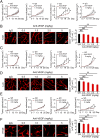

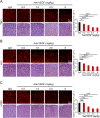
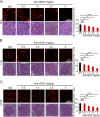
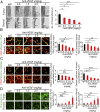
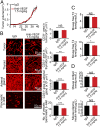
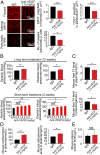
Similar articles
-
Discontinuation of anti-VEGF cancer therapy promotes metastasis through a liver revascularization mechanism.Nat Commun. 2016 Sep 1;7:12680. doi: 10.1038/ncomms12680. Nat Commun. 2016. PMID: 27580750 Free PMC article.
-
Anti-VEGF- and anti-VEGF receptor-induced vascular alteration in mouse healthy tissues.Proc Natl Acad Sci U S A. 2013 Jul 16;110(29):12018-23. doi: 10.1073/pnas.1301331110. Epub 2013 Jul 1. Proc Natl Acad Sci U S A. 2013. PMID: 23818623 Free PMC article.
-
VEGF-targeted cancer therapeutics-paradoxical effects in endocrine organs.Nat Rev Endocrinol. 2014 Sep;10(9):530-9. doi: 10.1038/nrendo.2014.114. Epub 2014 Jul 22. Nat Rev Endocrinol. 2014. PMID: 25048037 Review.
-
VEGF-targeted therapy stably modulates the glycolytic phenotype of tumor cells.Cancer Res. 2015 Jan 1;75(1):120-33. doi: 10.1158/0008-5472.CAN-13-2037. Epub 2014 Nov 7. Cancer Res. 2015. PMID: 25381153
-
Tumor angiogenesis and accessibility: role of vascular endothelial growth factor.Semin Oncol. 2002 Dec;29(6 Suppl 16):3-9. doi: 10.1053/sonc.2002.37265. Semin Oncol. 2002. PMID: 12516032 Review.
Cited by
-
Cancer immunoediting and resistance to T cell-based immunotherapy.Nat Rev Clin Oncol. 2019 Mar;16(3):151-167. doi: 10.1038/s41571-018-0142-8. Nat Rev Clin Oncol. 2019. PMID: 30523282 Review.
-
Towards Targeting Endothelial Rap1B to Overcome Vascular Immunosuppression in Cancer.Int J Mol Sci. 2024 Sep 12;25(18):9853. doi: 10.3390/ijms25189853. Int J Mol Sci. 2024. PMID: 39337337 Free PMC article. Review.
-
Discontinuation of anti-VEGF cancer therapy promotes metastasis through a liver revascularization mechanism.Nat Commun. 2016 Sep 1;7:12680. doi: 10.1038/ncomms12680. Nat Commun. 2016. PMID: 27580750 Free PMC article.
-
Antiangiogenic antibody BD0801 combined with immune checkpoint inhibitors achieves synergistic antitumor activity and affects the tumor microenvironment.BMC Cancer. 2021 Oct 22;21(1):1134. doi: 10.1186/s12885-021-08859-5. BMC Cancer. 2021. PMID: 34686154 Free PMC article.
-
Case report: heart failure related to intravitreal injection of anti-VEGF.BMC Cardiovasc Disord. 2024 Aug 12;24(1):418. doi: 10.1186/s12872-024-04095-4. BMC Cardiovasc Disord. 2024. PMID: 39135154 Free PMC article.
References
-
- D’Agostino RB., Sr Changing end points in breast-cancer drug approval—The Avastin story. N Engl J Med. 2011;365(2):e2. - PubMed
-
- Hurwitz H, et al. Bevacizumab plus irinotecan, fluorouracil, and leucovorin for metastatic colorectal cancer. N Engl J Med. 2004;350(23):2335–2342. - PubMed
-
- Motzer RJ, et al. Pazopanib versus sunitinib in metastatic renal-cell carcinoma. N Engl J Med. 2013;369(8):722–731. - PubMed
Publication types
MeSH terms
Substances
LinkOut - more resources
Full Text Sources
Other Literature Sources

